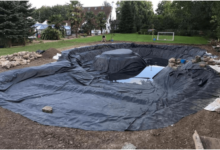Sales Funnel: The Core of a Conversion-Driven Strategy

In the intricate dance of modern commerce, businesses must guide potential customers from fleeting curiosity to committed action. The sales funnel serves as the backbone of this process, offering a structured pathway to convert prospects into loyal patrons. Far from a mere marketing buzzword, the sales funnel is a strategic framework that aligns customer needs with business objectives, ensuring every interaction moves closer to a sale. This article explores the anatomy of the sales funnel, its critical role in driving conversions, and how businesses can optimize it for sustained success.
Mapping the Path to Purchase
At its core, the sales funnel represents the customer journey, segmented into stages that reflect varying levels of intent. The journey begins with awareness, where prospects first encounter a brand. It progresses through interest and consideration, where they evaluate offerings, and culminates in decision, where they commit to a purchase. Some models extend the funnel to include post-purchase stages like retention and advocacy, recognizing that a sale is not the end but a new beginning.
Each stage demands a tailored approach. A prospect discovering a brand through a social media ad has different needs than one comparing product features on a website. By understanding these distinctions, businesses can craft targeted strategies that resonate at every step, creating a seamless progression toward conversion.
See also: Top 4 Tips for Choosing the Right Asbestos Removal Contractor
Capturing Attention at the Top
The top of the funnel is about casting a wide net to attract as many relevant prospects as possible. At this stage, potential customers may not even recognize their need for a product or service. The goal is to spark curiosity and establish brand visibility. Content marketing, paid advertising, and search engine optimization are powerful tools here, offering opportunities to engage broad audiences.
For instance, a company selling project management software might publish blog posts about workplace productivity, optimized for search terms like “improve team efficiency.” These efforts draw in readers who are exploring solutions, even if they’re not yet ready to buy. The focus should be on providing value—educational content, engaging visuals, or thought-provoking campaigns—that positions the brand as a trusted authority.
Building Trust Through Engagement
As prospects move into the middle of the funnel, their focus narrows. They’re actively researching, comparing options, and seeking answers to specific questions. This is where businesses must deepen the relationship, offering detailed information and personalized interactions to build trust. Webinars, whitepapers, and email nurturing campaigns are particularly effective, providing substance to back up initial impressions.
Imagine an e-commerce brand selling fitness equipment. A prospect who clicked on an ad for dumbbells might receive a follow-up email with a video demonstrating workout routines or a guide to choosing the right weights. These touchpoints address pain points and showcase expertise, helping prospects feel confident in their decision-making. Personalization is key—leveraging data to tailor content ensures relevance and strengthens connections.
Sealing the Deal with Precision
The bottom of the funnel is where intent transforms into action. Prospects at this stage are ready to buy but often need a final nudge. Clear, compelling calls-to-action, streamlined purchasing processes, and reassurances like guarantees or testimonials can make the difference. Urgency tactics, such as limited-time offers, can also accelerate decisions without compromising trust.
Consider a travel agency offering vacation packages. A prospect who’s browsed specific destinations might receive a targeted email with a discount code and customer reviews praising the experience. The agency’s website should make booking intuitive, with transparent pricing and easy navigation. By removing barriers and reinforcing value, businesses can convert hesitation into commitment.
Leveraging Data for Optimization
A well-designed sales funnel thrives on insight. Analytics tools provide a window into customer behavior, revealing which strategies work and where prospects drop off. Metrics like click-through rates, time spent on pages, and conversion rates offer clues about performance at each stage. This data empowers businesses to refine their approach, eliminating friction and maximizing impact.
For example, a retailer might notice high cart abandonment rates at checkout. By analyzing user behavior, they could identify issues like unexpected shipping costs or a complex payment process. Addressing these pain points—perhaps by offering free shipping or simplifying the interface—can significantly boost conversions. Continuous monitoring ensures the funnel remains aligned with customer expectations.
Balancing Scale and Authenticity
Technology has revolutionized the sales funnel, enabling automation that scales efforts efficiently. Tools like customer relationship management (CRM) systems and marketing automation platforms streamline tasks such as lead scoring, email sequencing, and ad retargeting. However, automation must be tempered with authenticity to avoid alienating prospects who value human connection.
A financial services firm, for instance, might use automated emails to nurture leads but include personalized video messages from advisors to build rapport. This hybrid approach combines efficiency with warmth, ensuring prospects feel valued rather than processed. Striking this balance is critical to maintaining trust throughout the funnel.
Adapting to a Shifting Landscape
The sales funnel is not static—it evolves with market trends and consumer behavior. The rise of mobile commerce, for example, has made seamless mobile experiences non-negotiable, as prospects expect to research and buy on the go. Similarly, growing privacy concerns have shifted reliance toward first-party data, requiring businesses to prioritize transparent data practices.
Emerging technologies, such as AI-driven chatbots or immersive video content, are also reshaping funnel dynamics. A retailer might deploy a chatbot to answer product questions in real time, guiding prospects toward purchase with minimal friction. Staying agile and experimenting with new tools keeps the funnel relevant in a competitive environment.
Aligning with Broader Business Goals
The sales funnel doesn’t operate in isolation—it must align with overarching business objectives. Whether the goal is market expansion, customer retention, or brand differentiation, the funnel should reflect these priorities. This alignment ensures resources are allocated effectively and messaging remains consistent across channels.
A B2B company aiming to enter a new industry, for example, might design a funnel that emphasizes thought leadership to establish credibility. Its top-of-funnel content could include industry reports, while middle-funnel webinars feature expert panels. By tying the funnel to strategic goals, businesses create a cohesive narrative that drives meaningful outcomes.
Turning Customers into Advocates
The journey doesn’t end with a sale. Post-purchase engagement is critical to transforming customers into advocates who fuel organic growth. Follow-up communications, loyalty programs, and requests for feedback keep customers connected to the brand. Exceptional service at this stage can turn a one-time buyer into a lifelong supporter.
A subscription-based meal kit service, for instance, might send recipe tips or invite customers to join a referral program with rewards for both parties. These efforts reinforce value and encourage customers to share their positive experiences, effectively feeding new prospects into the top of the funnel. This cyclical dynamic amplifies reach and strengthens brand loyalty.
Sustaining Momentum for Long-Term Success
The sales funnel is a living system, requiring ongoing attention to deliver results. Regular audits—assessing content performance, user experience, and conversion metrics—help identify opportunities for improvement. A/B testing different headlines, offers, or layouts can uncover small tweaks that yield significant gains.
Equally important is a commitment to customer-centricity. Every decision, from content creation to checkout design, should prioritize the customer’s needs and preferences. By fostering genuine connections and delivering consistent value, businesses can ensure the funnel remains a powerful engine for growth.
The sales funnel is more than a tool—it’s a philosophy that places the customer at the heart of every strategy. By guiding prospects through a thoughtful, data-informed journey, businesses can build trust, drive conversions, and cultivate relationships that endure. In a world of endless choices, a well-executed funnel is the key to standing out and thriving.




